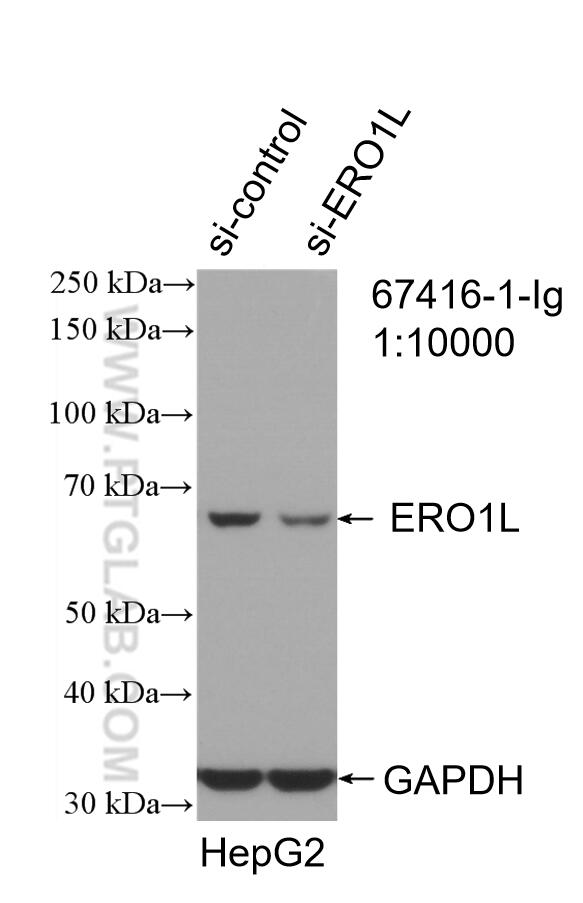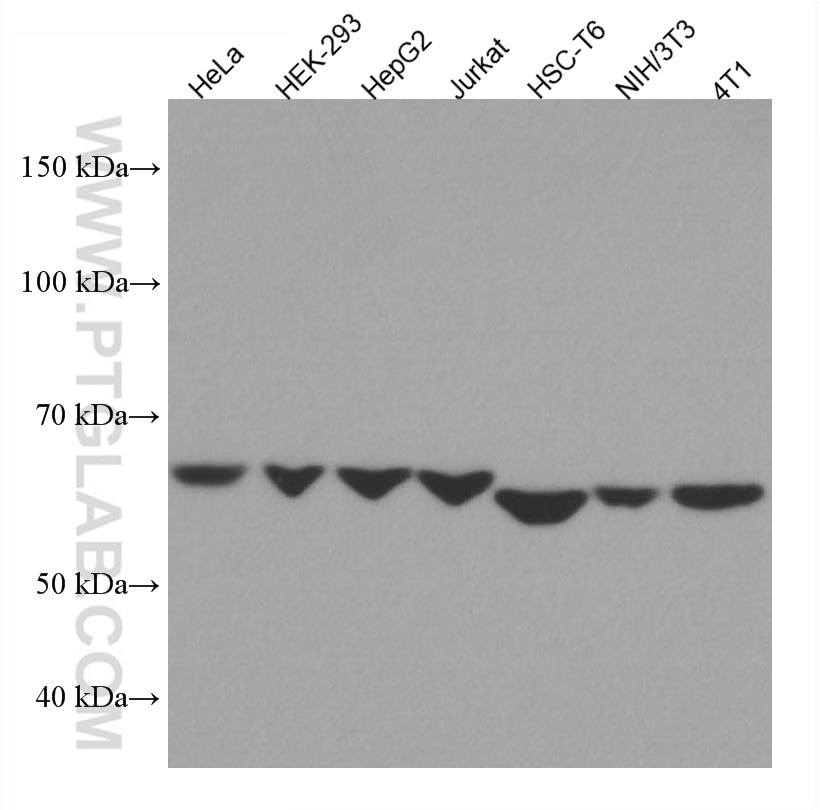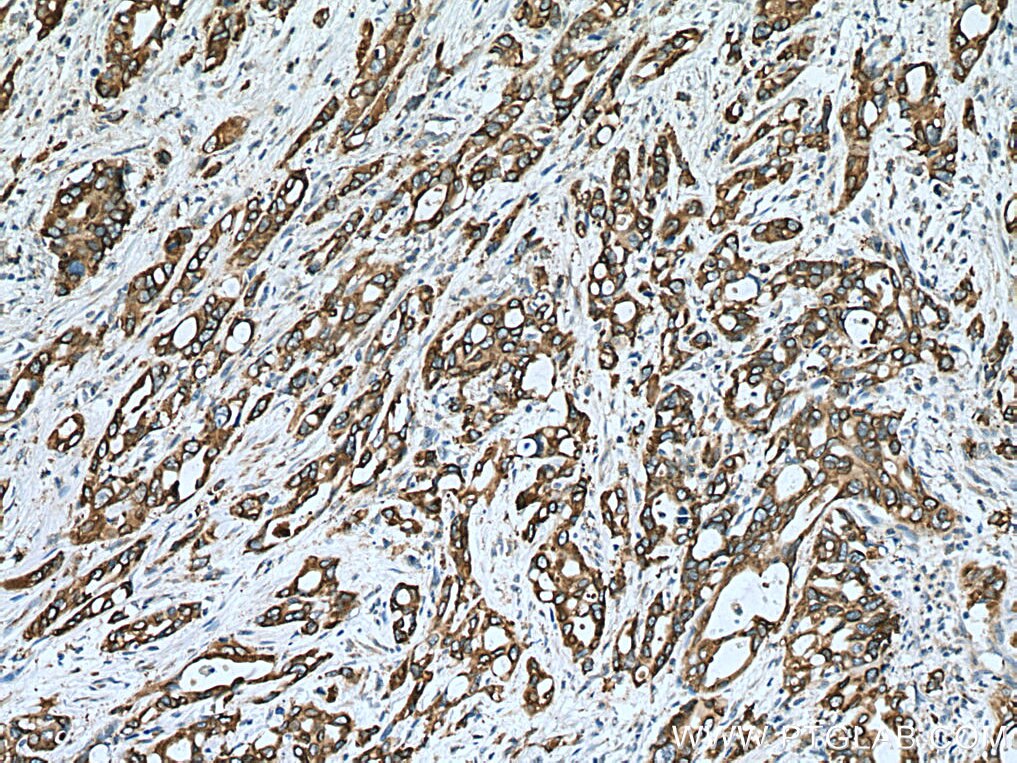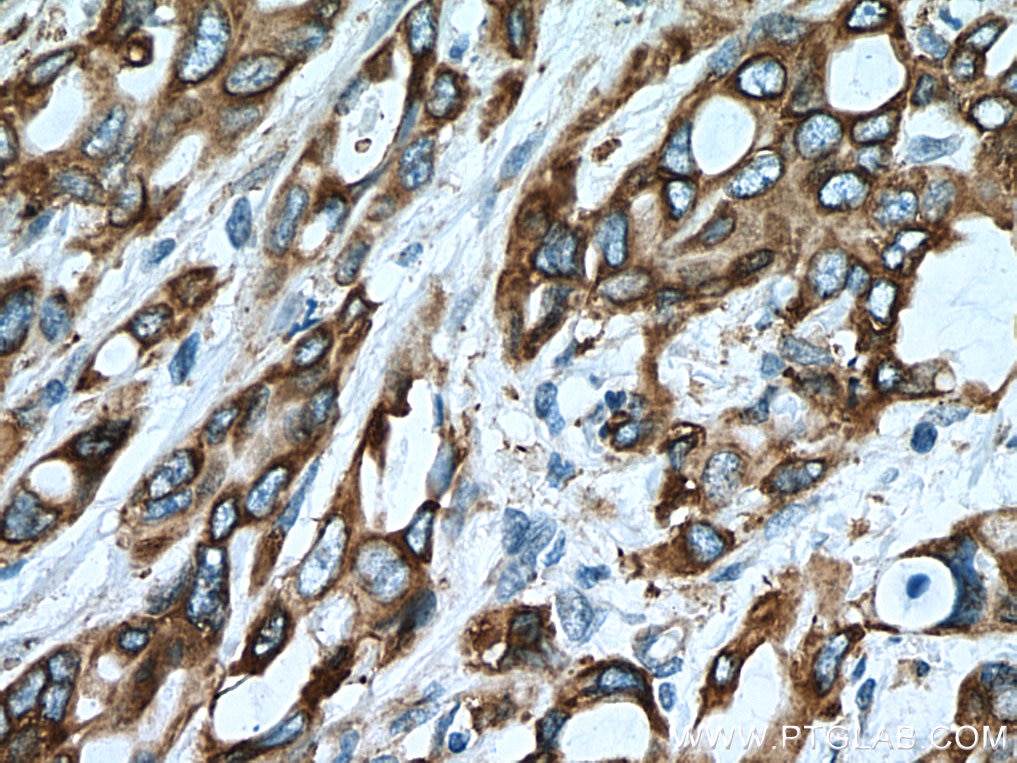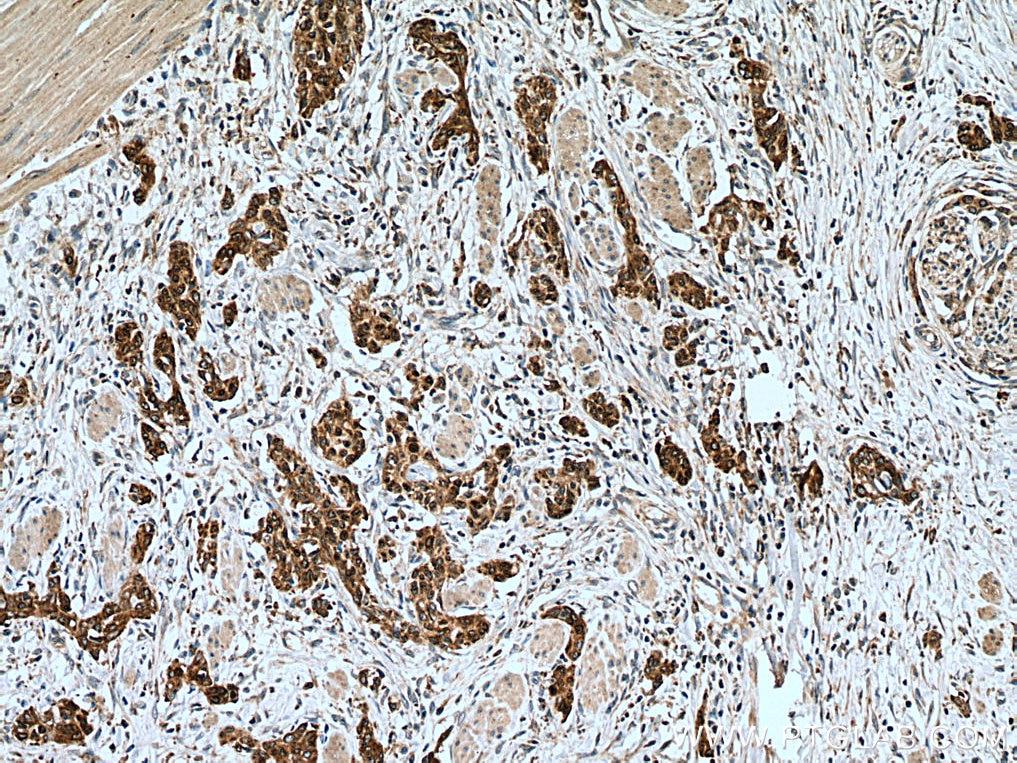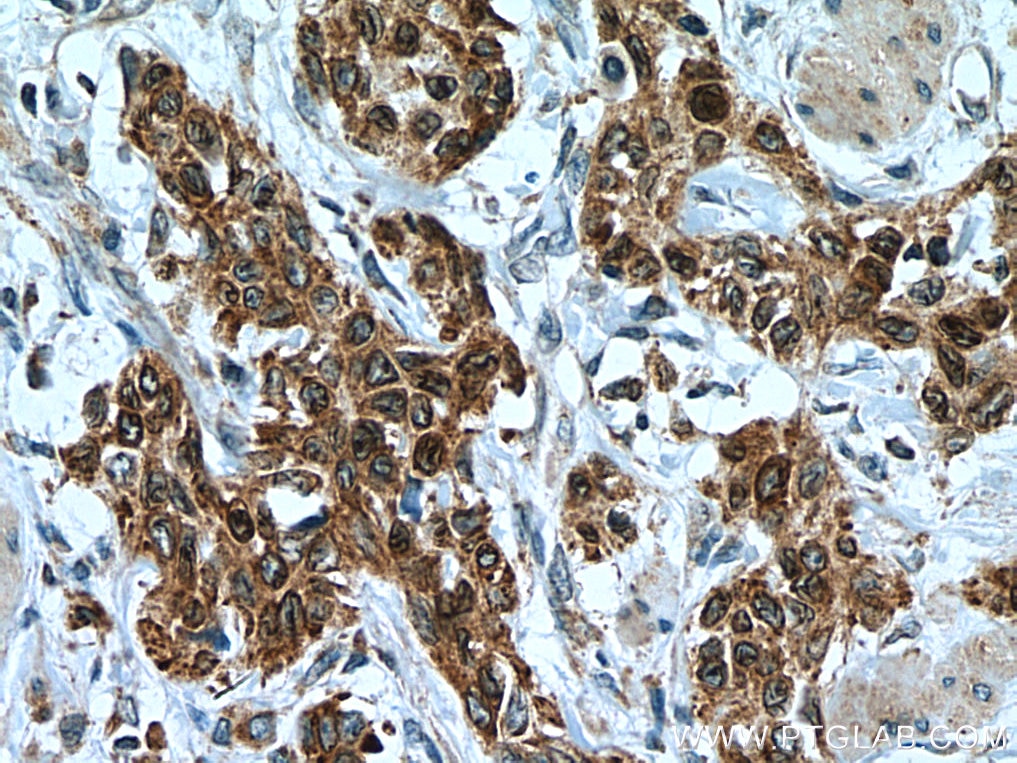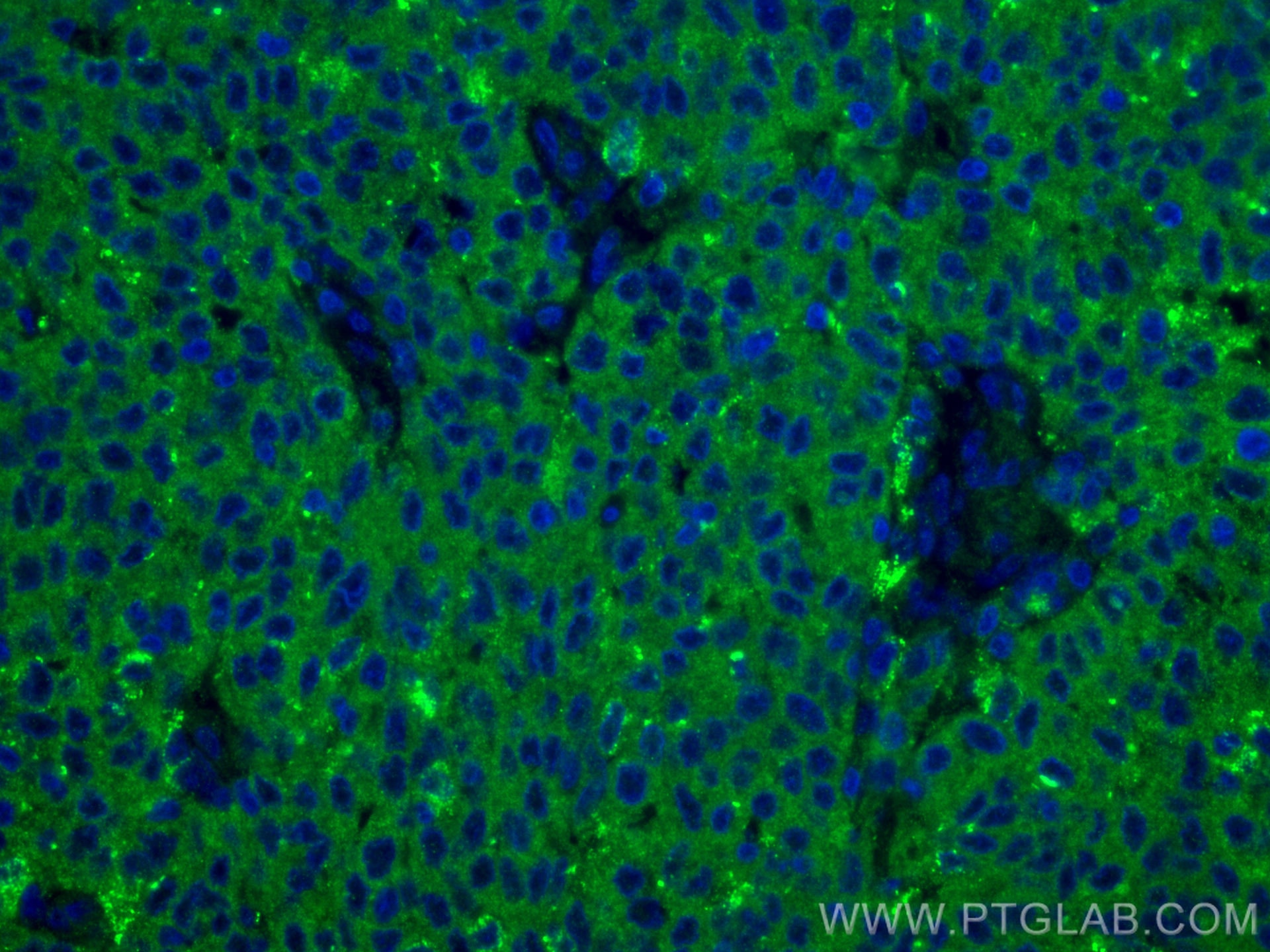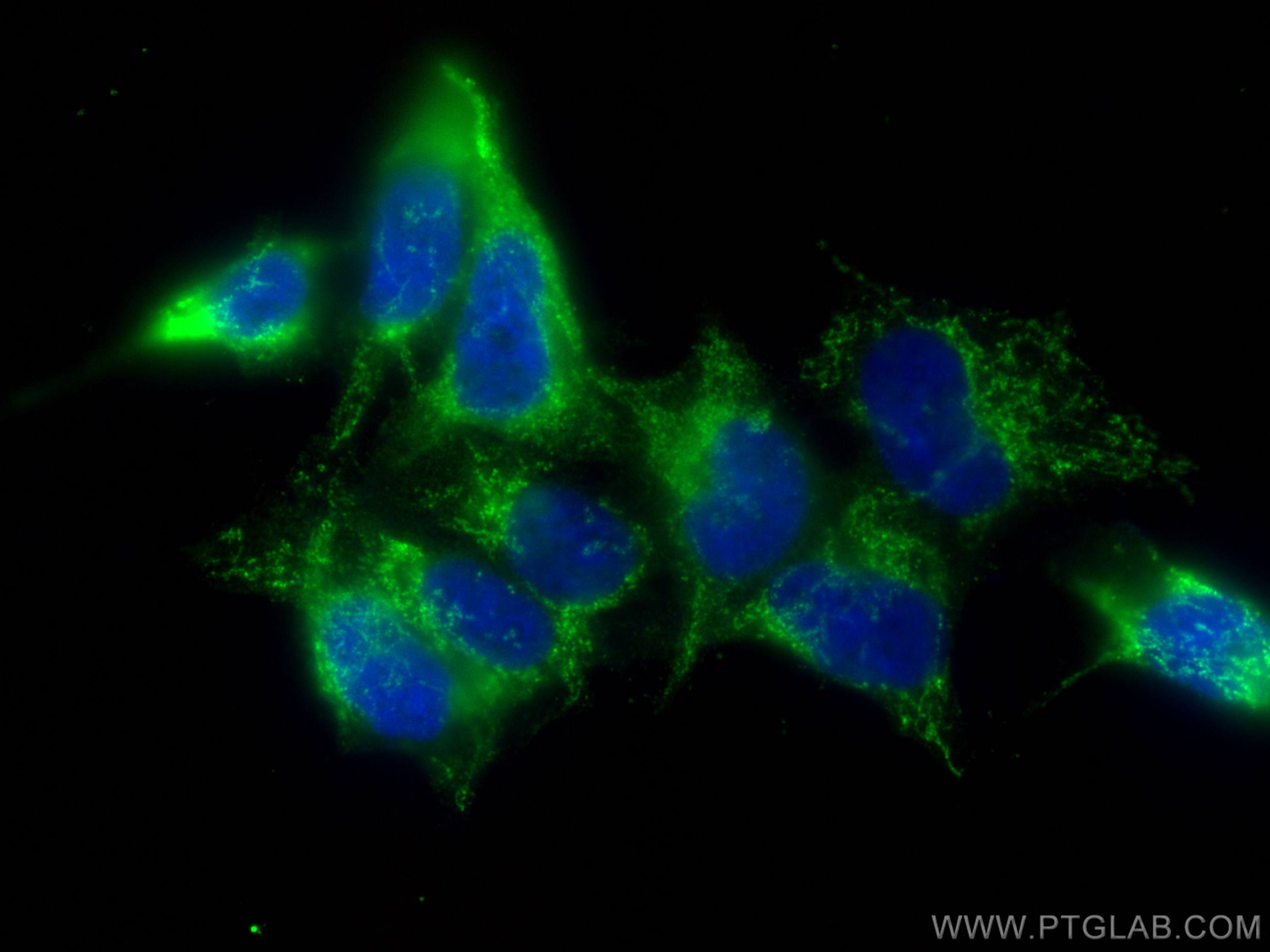- Phare
- Validé par KD/KO
Anticorps Monoclonal anti-ERO1L
ERO1L Monoclonal Antibody for WB, IHC, IF/ICC, IF-P, ELISA
Hôte / Isotype
Mouse / IgG2b
Réactivité testée
Humain, rat, souris
Applications
WB, IHC, IF/ICC, IF-P, ELISA
Conjugaison
Non conjugué
CloneNo.
1G12E11
N° de cat : 67416-1-Ig
Synonymes
Galerie de données de validation
Applications testées
| Résultats positifs en WB | cellules HeLa, cellules 4T1, cellules HEK-293, cellules HepG2, cellules HSC-T6, cellules Jurkat, cellules NIH/3T3 |
| Résultats positifs en IHC | tissu de cancer du pancréas humain, tissu de cancer de l'estomac humain il est suggéré de démasquer l'antigène avec un tampon de TE buffer pH 9.0; (*) À défaut, 'le démasquage de l'antigène peut être 'effectué avec un tampon citrate pH 6,0. |
| Résultats positifs en IF-P | tissu de cancer de l'estomac humain, |
| Résultats positifs en IF/ICC | cellules HEK-293, |
Dilution recommandée
| Application | Dilution |
|---|---|
| Western Blot (WB) | WB : 1:5000-1:50000 |
| Immunohistochimie (IHC) | IHC : 1:500-1:2000 |
| Immunofluorescence (IF)-P | IF-P : 1:200-1:800 |
| Immunofluorescence (IF)/ICC | IF/ICC : 1:200-1:800 |
| It is recommended that this reagent should be titrated in each testing system to obtain optimal results. | |
| Sample-dependent, check data in validation data gallery | |
Applications publiées
| WB | See 3 publications below |
Informations sur le produit
67416-1-Ig cible ERO1L dans les applications de WB, IHC, IF/ICC, IF-P, ELISA et montre une réactivité avec des échantillons Humain, rat, souris
| Réactivité | Humain, rat, souris |
| Réactivité citée | souris |
| Hôte / Isotype | Mouse / IgG2b |
| Clonalité | Monoclonal |
| Type | Anticorps |
| Immunogène | ERO1L Protéine recombinante Ag29910 |
| Nom complet | ERO1-like (S. cerevisiae) |
| Masse moléculaire calculée | 468 aa, 54 kDa |
| Poids moléculaire observé | 60 kDa |
| Numéro d’acquisition GenBank | BC008674 |
| Symbole du gène | ERO1L |
| Identification du gène (NCBI) | 30001 |
| Conjugaison | Non conjugué |
| Forme | Liquide |
| Méthode de purification | Purification par protéine A |
| Tampon de stockage | PBS with 0.02% sodium azide and 50% glycerol |
| Conditions de stockage | Stocker à -20°C. Stable pendant un an après l'expédition. L'aliquotage n'est pas nécessaire pour le stockage à -20oC Les 20ul contiennent 0,1% de BSA. |
Informations générales
ERO1L, also named as ERO1-alpha, is an essential oxidoreductase that oxidizes proteins in the endoplasmic reticulum to produce disulfide bonds. It acts by oxidizing directly P4HB/PDI isomerase through a direct disulfide exchange. It does not act as a direct oxidant of folding substrate, but relies on P4HB/PDI to transfer oxidizing equivalent. Associates with ERP44 but not with GRP54, demonstrating that it does not oxidize all PDI related proteins and can discriminate between PDI and related proteins. Its reoxidation probably involves electron transfer to molecular oxygen via FAD. Glutathione may be required to regulate its activity in the endoplasmic reticulum. It may be responsible for a significant proportion of reactive oxygen species (ROS) in the cell, thereby being a source of oxidative stress. It is required for the folding of immunoglobulin proteins. Responsible for the release of the unfolded cholera toxin from reduced P4HB/PDI in case of infection by V.cholerae, thereby playing a role in retrotranslocation of the toxin. ERO1L has a calculated molecular weight of 54 kDa and can be detected as 60kDa.
Protocole
| Product Specific Protocols | |
|---|---|
| WB protocol for ERO1L antibody 67416-1-Ig | Download protocol |
| IHC protocol for ERO1L antibody 67416-1-Ig | Download protocol |
| IF protocol for ERO1L antibody 67416-1-Ig | Download protocol |
| Standard Protocols | |
|---|---|
| Click here to view our Standard Protocols |
Publications
| Species | Application | Title |
|---|---|---|
Theranostics A novel NEDD4L-TXNIP-CHOP axis in the pathogenesis of nonalcoholic steatohepatitis | ||
Nitric Oxide Enhancing S-nitrosoglutathione Reductase Decreases S-Nitrosylation of ERO1α and Reduces Neuronal Death in Secondary Traumatic Brain Injury | ||
Biol Trace Elem Res Lead (Pb) Induces Osteotoxicity Through the Activation of Mutually Reinforced ER Stress and ROS in MC3T3-E1 Cells |
